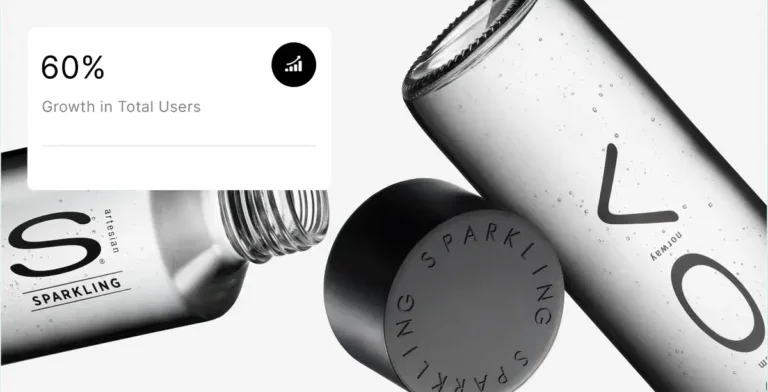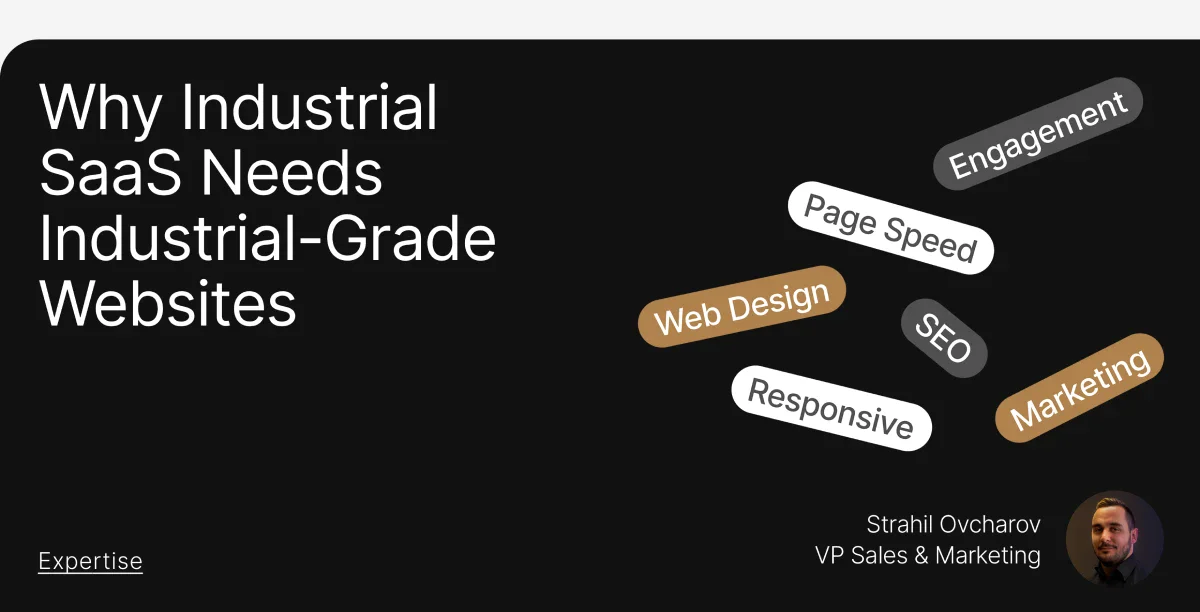For companies in oil & gas, water management, and industrial automation, trust is everything. Operators and executives rely on systems that must not fail. SCADA platforms that control wells, pipelines, and treatment facilities; dashboards that ensure regulatory compliance; and automation tools that keep production running.
SitePro has established itself as a leader in this space, providing cloud-based SCADA and industrial SaaS that replaces outdated control rooms with smarter, more agile digital infrastructure. But even the most advanced technology can be undercut if the company’s website doesn’t communicate value, clarity, and trust to decision-makers.
As Strahil emphasized during our review, “Your website isn’t just a brochure, it’s your 24/7 salesperson. It has to align with KPIs, personas, and business objectives.” For SitePro, that means building a digital experience as robust and reliable as the software they sell.
1. Storytelling That Connects SCADA Features to Field Realities
Industrial SaaS buyers don’t purchase a platform because of a feature checklist, they buy it because it solves operational pain points. Right now, SitePro’s website leans too heavily on static descriptions. As Brett noted, “It feels like a pick-and-click brochure. What’s missing is a storytelling experience.”
For SitePro, storytelling should link features to field outcomes:
- Show how remote SCADA dashboards help operators eliminate unnecessary truck rolls.
- Illustrate how automated water transfer systems prevent costly spills and manual errors.
- Demonstrate how compliance reporting tools make audits with regulators faster and less stressful.

When buyers see their own problems reflected back, whether it’s an oilfield manager cutting downtime or a municipal utility providing water quality compliance, the website becomes a digital consultant.
Takeaway: For companies selling SCADA and industrial SaaS, websites should map technical features directly to operational gains like uptime, cost reduction, and compliance confidence.
2. A Visual Identity That Matches Engineering Precision
In sectors where reliability defines success, brand perception matters. SitePro’s logo is known in its markets, but as Brett put it, “If I remove your logo, nothing on the page really belongs to you.”
That’s a problem for a company selling engineered solutions. The website should feel as custom-built as the automation workflows and telemetry systems SitePro installs. That means:
- Replacing generic stock icons with custom visuals for SCADA, IoT sensors, and field operations.
- Integrating brand elements into dashboards, process graphics, and equipment diagrams shown online.
- Pairing photos of real industrial environments (pump stations, well pads, municipal plants) with software screenshots to bridge the field-to-cloud narrative.
Competitors often blur together with templated sites. A distinct visual identity reinforces that SitePro’s solutions are engineered for mission-critical environments.
Takeaway: In industrial SaaS, design precision signals product precision. A unique visual system shows buyers that your platform is as reliable and specialized as their infrastructure.
3. Navigation That Directs Buyers by Role and Outcome
Industrial SaaS buyers aren’t always sure what they need. A plant operator may search for “monitoring software” when the real solution is a full SCADA automation platform. A CFO may care about “compliance reporting” without knowing it comes bundled with SitePro’s dashboards.
That’s where navigation must act as pre-sales triage. Brett explained it clearly: “Your nav isn’t wrong, but it’s just the benchmark. A smart menu gives users visual feedback, education, and conversion pathways before they even click.”
For SitePro, that could mean structuring navigation around personas and outcomes:
- Operators: “Monitor Assets” → dashboards, alarms, field mobility tools.
- Executives: “Optimize Performance” → analytics, regulatory reporting, ESG compliance.
- Engineers/IT: “Integrate Systems” → APIs, hardware interoperability, developer resources.
Adding cross-links (“Exploring dashboards? See how compliance reporting integrates automatically.”) ensures no buyer hits a dead end.
Takeaway: For companies selling complex automation, navigation should act like a control system. Guiding operators, executives, and engineers toward the solution that solves their specific problem.
4. SEO for High-Intent Industrial Queries
Unlike consumer markets, industrial SaaS doesn’t rely on millions of keyword searches. Instead, it’s about low-volume, high-intent terms like “cloud SCADA for water management” or “oilfield automation software.”
As I noted, “It’s not about hitting home runs with massive keywords. It’s about stacking singles. You win the game by dominating 50 of these low-volume terms.”
For SitePro, that means:
- Creating content hubs around niche problems: “Automating SWD well monitoring,” “Reducing truck rolls with cloud SCADA,” “Meeting EPA reporting requirements digitally.”
- Targeting compliance-focused keywords (e.g., “regulatory water reporting SaaS”) that reflect real buyer pain points.
- Consolidating content so blogs, case studies, and product pages strengthen the same domain authority rather than splitting it.
This approach reflects how real industrial buyers search with very specific queries tied to urgent operational or regulatory challenges.
Takeaway: In SaaS for oil & gas and water, SEO success means dominating specialized, compliance-driven searches that signal a buyer is ready to evaluate vendors.
5. Social Proof as Proof of Reliability
Industrial SaaS decisions often involve million-dollar stakes and months of evaluation. Buyers need to know that the platform is proven in environments like theirs. That’s why social proof is a missing but vital component on SitePro’s site.

As I emphasized, “There’s a distinct lack of social proof. That’s an SEO driver, a UX trust builder, and a conversion factor.”
SitePro has a strong library of customer stories and testimonials. The opportunity is to integrate them where they matter most:
- On solution pages: Embed short video testimonials from oilfield and municipal clients.
- In navigation and CTAs: Use client logos and sector callouts to validate credibility early.
For an executive evaluating vendors, seeing another operator’s uptime increase or compliance success is far more persuasive than reading a feature description.
Takeaway: For SCADA and automation providers, social proof is the ultimate differentiator. Proof that your platform performs under real-world industrial pressure.
A Website That Works as Hard as the Company
SitePro already delivers technology that keeps rigs, pipelines, and water systems operating efficiently. The audit revealed the chance to ensure the website does the same. Working 24/7 as a sales tool that educates, qualifies, and builds trust.
By shifting from brochureware to storytelling that connects features to field outcomes, engineering a visual identity as precise as the software itself, guiding buyers through role-based navigation, owning niche SEO queries, and elevating social proof as trust signals, SitePro can transform its site into a true growth driver.
And the lesson extends beyond SitePro. Every industrial SaaS company faces the same imperative: if your platform keeps the world’s infrastructure running, your website must project the same reliability. The companies that get this right will lead the next era of digital transformation in oil & gas, water management, and beyond.









